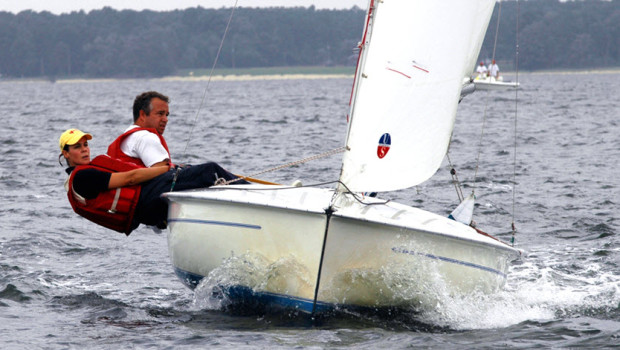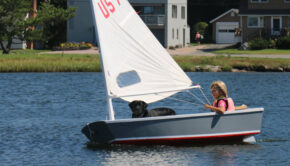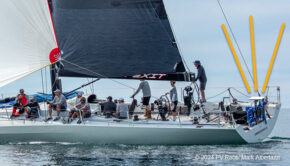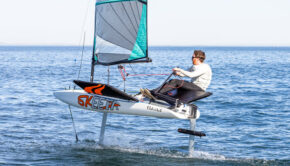Slow and steady approach to class management
Published on February 23rd, 2014
The 19-foot Flying Scot was designed in 1957 by Gordon K. (Sandy) Douglass who had already designed the Thistle and Highlander dinghies. It may not be the sexiest boat, but it is among the most active and successful classes in the USA.
Common among established classes, the success of the Flying Scot Sailing Association (FSSA) is due to its strict adherence to the one design concept. As stated on the FSSA website, “Owners of Flying Scots are assured that their boats will last for years, and its re-sale value will remain excellent. Also, the FSSA helps promote the Flying Scot which maintains the boats popularity and value.”
The challenge for one design classes is that since their rules were established, the world kept moving, and advancements have occurred that may offer some benefit to these classes. However, often times, advancements cost money, or they otherwise change the game. The more active and competitive members tend to be for change, while the typically larger segment of casual racers are hesitant.
A pattern among classes that have remained strong over time is their association looks after the larger segment of casual members. They tend to be the lifeblood of any class. While the top racers are in it mostly for the racing, the casual racer involvement tends to be broader. When a class loses its casual members, they lose a lot of their structure.
One of the issues that all one design classes have faced is the introduction of VHF radios. Some classes accepted them on sight, while classes like the Flying Scot have been resistant… until now. Here’s an update from past FSSA president Diane Kampf:
“The Flying Scot class has recently voted to allow the use of VHF radios for calling OCS and General Recalls by the RC. This is a change that has been voted on in the past and rejected, but recently was bought up again to the membership and it was voted 85% for, 15% against by the membership.
“This is seen by some as a major improvement and progress in Race Management for the class. Some of the negative press has been around this making the VHF radio a de facto requirement if you want to avail yourself of all the information your competitors have. Others are worried that this will make the starting line even more aggressive.
“The potential PROs for our regattas are happy with this change and are looking forward to a more organized starting line and race management in general. This will be used in our upcoming Midwinters in New Orleans starting on March 15. We will find out soon how this will work for us as a class.”
Click here for the report.
Note: Annapolis Performance Sailing supplies the Icom IC-M24 VHF Radio, which floats and is submersible (to 1m for 30 minutes). Cost is $233.12.









 We’ll keep your information safe.
We’ll keep your information safe.